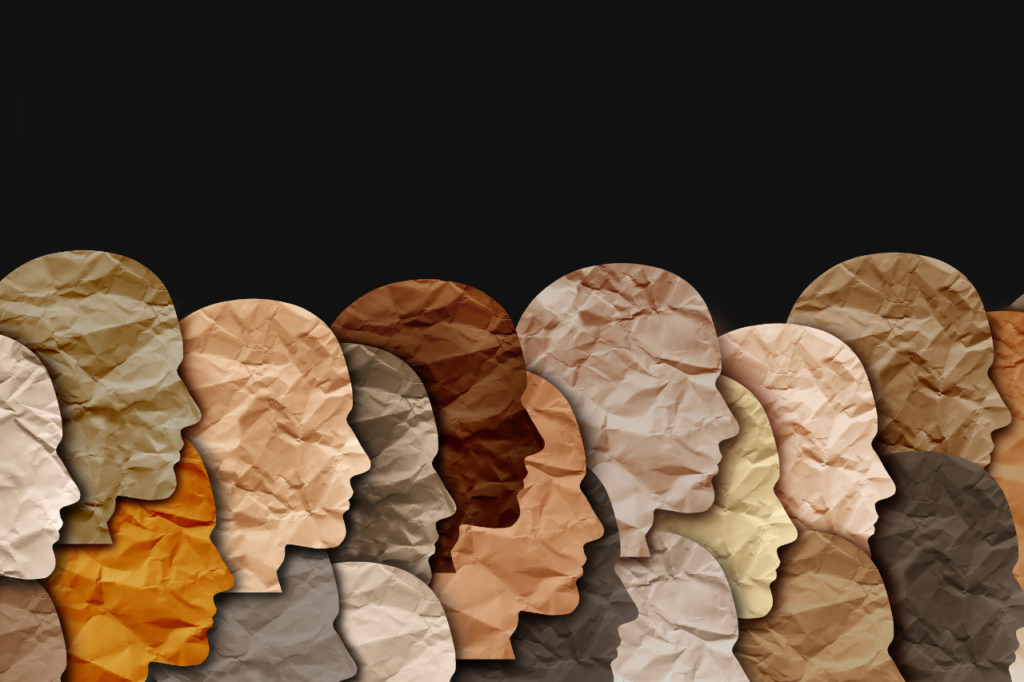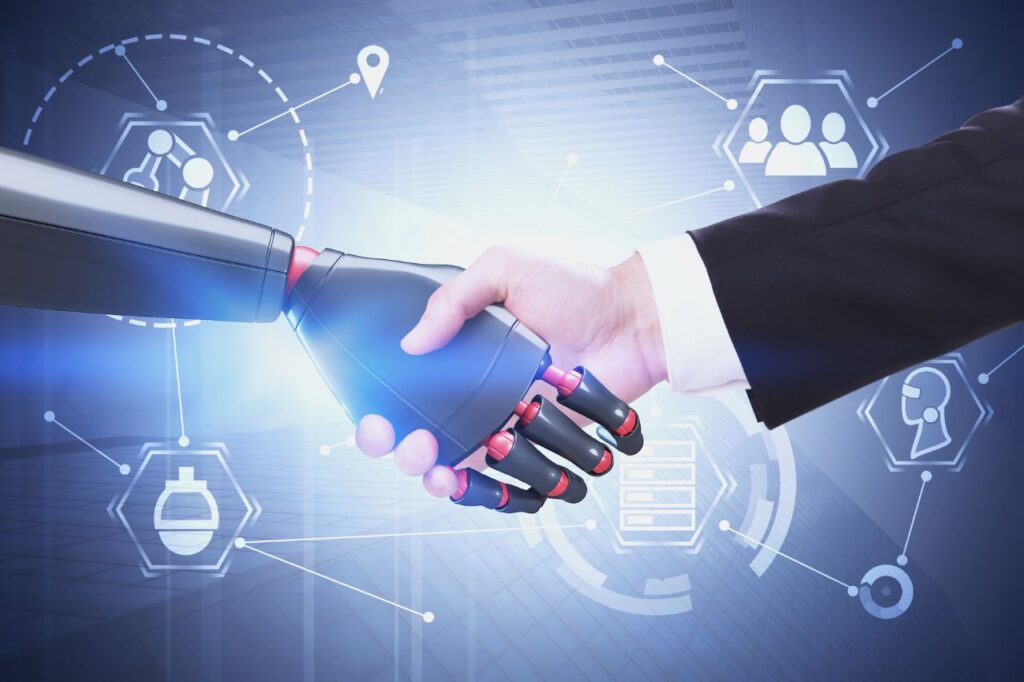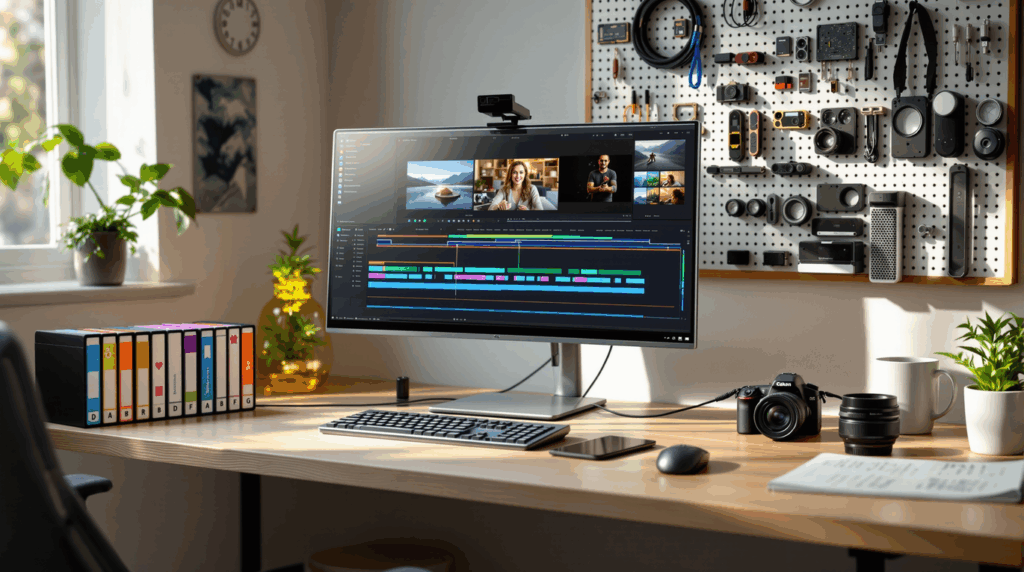You’ve probably heard of students copying their homework from Generative AI tools like ChatGPT. And it sure wouldn’t surprise you if this very blog was written by one of those. But this is barely scratching the surface.
It won’t be a stretch to say that the implications of machine learning are near infinite. From detecting art forgeries to being appointed as an acting CEO, there’s almost no field untouched by AI. One such subject is Neural Audio Generation, a subset of deep learning that focuses on synthesizing speech, sound effects, and other auditory content.
So what happens when AI generates voiceovers that sound just like humans?
As is the case with other industries, experts have raised concerns over AI replacing voiceover actors in the near future. While far-fetched, this assertion is by no means in vain.
Voiceover actors have served the entertainment industry for decades, lending their voices to our favorite characters. Who could ever forget the likes of Kevin Conroy as the Dark Knight or Mel Blanc, “The Man of a Thousand Voices”? However, with AI dubbing now coming to feature films, the tides appear to be turning. Now, we can expect YouTube videos or any short-form video content with voiceovers.
In a recent development, Microsoft has announced its latest Neural Codec Language model, called Vall-E, capable of imitating any voice with sample audio of just 3 seconds. With models that claim to have outperformed the state-of-the-art TTS and dubbing technology in terms of realness and semblance, do voiceover professionals stand a chance at retaining their careers?

Why is AI Dubbing Gaining Traction?
There is no one reason why Neural Network models have gained traction over the past couple of years. Efficiency, accessibility, global outreach, and the degree of freedom in voice synthesis are all proponents of AI Dubbing.
Efficiency and Cost Effectiveness
It’s common knowledge that AI Dubbing technology significantly improves on its traditional counterpart in terms of cost and time efficiency. A lot of hassle goes into the traditional dubbing process, not the least of which is iterating over the entire process until you have the perfect audio.
With AI dubs, most of your work is reduced to simply feeding the model the prompt or the script. The greater part of the process is automated and can be delivered within minutes without the need for do-overs.
Accessibility to Global Audience
Language localization and rapid content distribution are two of many ways how AI-dubbing helps in global reach. Multilingual accessibility is the ultimate tool when it comes to reaching a diverse audience.
Traditional dubbing can be an expensive affair that only a few can afford. With the creator economy on the rise, more people can access localizing their content into different languages using AI tools which cost only a fraction of the traditional method.
Improvement in Voice Synthesis
The traditional dubbing would have you searching for voiceover actors for different languages, and doing retakes, and you might still end up with inconsistent audio delivery. Now imagine you could generate all those audio files within minutes, with both consistency and quality.
Generative AI can emulate any voice with minimal training and resources. Did you know that this technology is already being used by popular Hollywood studios and that viewers have claimed that they appeared more authentic than the originals?
Flexibility and Technological Advancements
With code, there’s so much more flexibility than that with individual voiceover actors. You can modulate the sound, adjust the tone, regulate the pitch, and match cultural nuances among other things.
Deep learning models aided with huge audio datasets have bolstered the performance of AI-generated audio to the point that it isn’t easy to make out the original audio from a set of deep-faked ones. No coffee breaks are needed. This makes it much more viable to use Generative AI in the actors’ stead.
How does AI dubbing impact industries?
In February 2023, YouTube rolled out a new feature, called multi language audio track, that allowed content creators to embed multiple audio tracks in a single video. What this meant was that a single video could be viewed in multiple languages. Now this feature might not be available to most creators at the moment, but it soon will be.
This means that YouTube creators will now be able to harness the power of multilingual content to cater to a wider audience. This sets the pretext for AI Dubbing and an opportunity for creators to capitalize on.
This is where AI Dubbing comes in handy. In contrast to the traditional voiceovers and the unending cycle of sound editing in post-production, you could just feed the model a script or even a video.
One of the more popular franchises, Star Wars, has been in cinemas since the late 1970s, featuring Mark Hamill as one of the protagonists. However, as the actor aged, it became progressively difficult to portray him in the same time period as shot in 1977. Eventually, deepfakes and voice synthesis were used to reanimate the character, giving the fans, “A New Hope”. This, as it turns out, isn’t the only time when deep learning algorithms have been used to bring characters to life.
And not just the film industry, business owners who wish to venture into new market segments can use it to create ads, communicate with their customers, and build chatbots. Creators can even repurpose video content in multiple languages to advertise to a more diverse community. Moreover, SMEs and MNCs can use it for employee training without additional costs.
Are There Any Limitations of AI Dubbing?
As much as we’d like to think of it as a way out, AI Dubbing is not perfect. There’s a lot of room for improvement, some of which we have discussed below:
Accents and Dialects
This one is patently obvious and one of the more interesting challenges faced by Neural Codec Language models. Even individual languages have a variety of accents based on the region they’re spoken in. A Russian mobster and a Chinese monk, while both might speak English, could be miles apart in tone and modulation.
Artificial intelligence and NLP models are still working on retaining accents and dialects. While they may have different voices, it is difficult to enable one voice to speak in multiple accents and dialects.
In fact, Dubverse plans to retain these differences with consistent voiceover using NeoDub technology.

Cultural Nuances
Ever heard of the story of Helen of Troy? Well, you might have, but the point is that when you’re speaking in a language with a certain cultural backdrop, you sometimes name-drop cultural references that a lot of non-native speakers won’t understand.
In the case of dub, these references often need to be changed in accordance with the cultural relevance, lest you run the risk of losing the audience’s attention.
Contextual References
Every language in the world uses idioms and other literary devices. However, each of them only makes sense in their native language. When you say that a certain “window is too small ”, you’re generally referring to a time frame being short. Nonetheless, translating it to other languages alters the meaning altogether.
Naturalness and Emotional Nuances
This clearly refers to the tone, voice modulation, intensity, and pitch among other properties. Depending on the context of the video and an individual’s perspective, these properties vary significantly, and as of now, most language models aren’t equipped with the tools that naturally incorporate these properties.
Should Voice-Over Actors Be Really Concerned?
Now that AI-powered systems have the ability to generate realistic human-like voices, the dubbing process can be automated with close to zero human intervention. Nonetheless, while AI technology can mimic human speech, it still lacks human elements such as emotion, nuanced expression, and interpretation. These elements are the very essence of cinema and literature, and without infusing the characters with the necessary depth and authenticity, the purpose behind them is lost.
Ultimately, the role of voiceover actors might evolve in response to AI-dubbing technology. In a foreseeable scenario, voice actors can work with this technology in synergy to broaden their repertoire and explore different creative possibilities.
With AI, the landscape in various industries is changing. It is only by adapting to technological advancements can professionals in any field stay relevant.

Final Verdict
In all fairness though, AI-dubbing has come a long way, but it still has some ground to cover. What we’re implying is that AI has unveiled new opportunities for creators and business owners, and made it accessible and affordable to everyone. AI Dubbing empowers creators to share multilingual content and expand their reach beyond their geographical and language boundaries with little effort and investment.
Even though many believe it to be a replacement for voiceover actors, there’s a lot to be improved and developed in AI voiceover and dubbing. The best-case scenario appears to be where human voiceover actors and AI tools work together, complementing each other.
There’s no telling what opportunities lie ahead with AI Dubbing, but if there’s one thing we can ascertain, it is that both professionals and AI need to work together to bring forth the best possible results.


